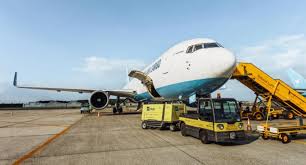Understanding the Impact of Tariffs
On August 1, 2025, air freight from India may be significantly influenced by a newly imposed tariff. The 25 percent tariff on Indian goods is expected to dampen market demand, prompting potential re-evaluations in air freight pricing strategies. Gautham R, a Senior Manager in Global Air Freight, has noted that in a slowing trade environment, rates could decline by 20-35%. High-value exporting sectors are bracing for heightened challenges, particularly while smartphone, pharma, and energy sectors remain untouched by tariffs, as indicated by recent government reports.
Forecasting Freight Rate Changes
In light of these economic shifts, air freight professionals are advised to anticipate and plan for sharp fluctuations in rates. Businesses navigating this treacherous terrain should rethink their freight strategies, with particular attention to fluctuations in demand that could arise from altered pricing structures. Adaptability will be essential.
Potential Price Adjustments
Should the tariff situation persist or worsen, the pressure on air freight rates from India will likely require adjustments to maintain volume amidst fluctuating demand. This situation raises critical questions for logistics planners: How will suppliers and shippers adjust their pricing models? What strategies will remain viable in an ever-evolving environment?
Strategies to Mitigate Tariff Impacts
- Evaluate Carrier Routes: Air freight operators should analyze and adjust their routing options to optimize yield based on freight demand.
- Revise Pricing Models: Develop flexible pricing strategies that can respond to market fluctuations.
- Monitor Market Demands: Keep a close watch on shifts in demand to quickly adapt to the needs of the market.
- Collaborate with Clients: Open lines of communication with clients to understand their shipping needs and adjust strategies accordingly.
Freighter Routing Adjustments
Airlines may shift their freighter routes to maximize profitability based on evolving demand signals. Such alterations are crucial as they impact not only capacity but also cost efficiency for cargo shipping, presenting another layer of complexity for logistics professionals. Carriers are expected to gravitate towards routes that promise better yields amidst the fluctuations.
Adapting Strategies for Continued Success
While revised tariffs impose significant barriers, they can also catalyze innovation in planning and strategy for air freight logistics. Businesses are encouraged to explore alternate approaches to mitigate potential negative impacts on their operations. Here’s a roadmap to effective adaptation:
Actionable Steps to Address Challenges
- Implement dynamic pricing models that can readily adjust to market conditions.
- Encourage strategic partnerships and communication with customers to foster loyalty and open dialogue.
- Stay informed about market trends and regulatory changes influencing air freight.
- Leverage technology and analytics for forecasting to stay ahead of demand fluctuations.
Conclusie
The evolving landscape of air freight, dictated by tariff changes and market forces, mandates sharp operational acuity from logistics professionals. Companies should not simply brace for change; instead, they should actively seek to adapt to the shifting dynamics of freight rates and supply chain demands. By planning for volatility and exploring new strategies, businesses can improve their resilience against unforeseen market adjustments.
GetTransport.com stands ready to support logistics operators through these unprecedented changes, providing global cargo transportation solutions tailored for cost-effectiveness and reliability. Whether it’s office relocations, deliveries of bulky goods, or moving furniture, GetTransport.com offers the resources needed to navigate this dynamic landscape smoothly and efficiently. Book your cargo transportation with GetTransport.com today and take control of your logistics needs!

 Navigeren door tariefschommelingen en strategische planning in luchtvracht">
Navigeren door tariefschommelingen en strategische planning in luchtvracht">